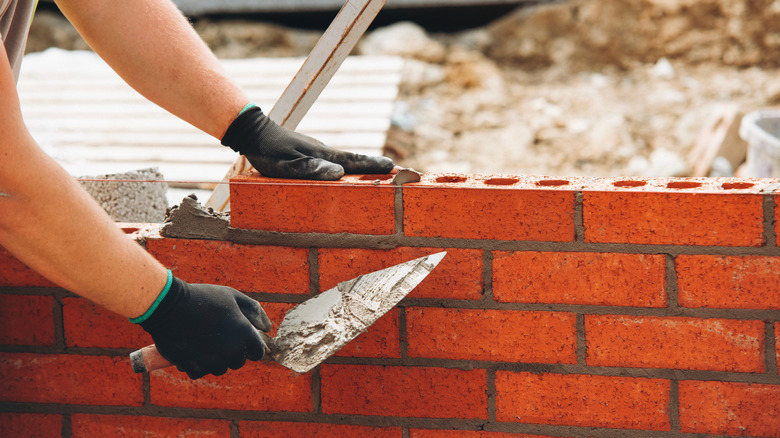Ever Wonder What The Holes In Bricks Are For? They Actually Have A Hidden Purpose
Bricks are a timeless and reliable building material that have a long-term effect on home's resale value. Not only are they rustic with their classic textural appearance, but bricks are known for being strong and unwavering. Exemplary for exterior walls or a patio to create the perfect outdoor escape, bricks can be used as a design feature inside the home as well. Typically, bricks are made with clay that is placed in a high temperature fire. The type of clay used, along with the cooling process, gives the brick its traditional reddish brown color. Bricks are rectangular and can vary in thickness. Sometimes bricks will have indentations, and you may have even seen bricks that have big holes right in the middle. This begs the question: Why do bricks have holes in them?
It turns out these holes actually have their own name — they're called frogs. They are primarily added to make installation easier, but the benefits of these frogs start as the bricks are being created. These holes make it possible for the firing process to be evenly distributed along each brick, and the holes mean that less clay is needed to complete one standard brick, saving on cost. As the bricks have a series of hollow centers, less heat is required to finish each brick which shortens the firing process. And, the frogs make for a super secure bond between bricks when they are installed. Mortar is applied on the surface of the bricks, which will then seep through into each hole for extra strength.
Holes in bricks allow for a stronger bond
The holes within bricks make the installation job easier on a number of fronts. The open spaces within the bricks make them easier to transport and lay down for mortaring, speeding up the job. But don't think that these cores lessen the brick's ability in any way. The outer layer of clay is strong enough to make the bricks perform as needed, so the strength won't be compromised. They also put less stress on the foundation so the structure is unlikely to be overwhelmed by weight and crumble.
The holes, or frogs, provide extra space for mortar to be placed so a tighter, stronger bond is formed deeper than just the perimeter of the brick. This adds further reinforcement without needing an influx of mortar to be applied. It's especially useful for exterior applications that require the ability to stay fused together no matter the temperature or weather. And, it provides assurance that the full structure will still be strong and sound even if individual bricks eventually need to be repaired and replaced.

